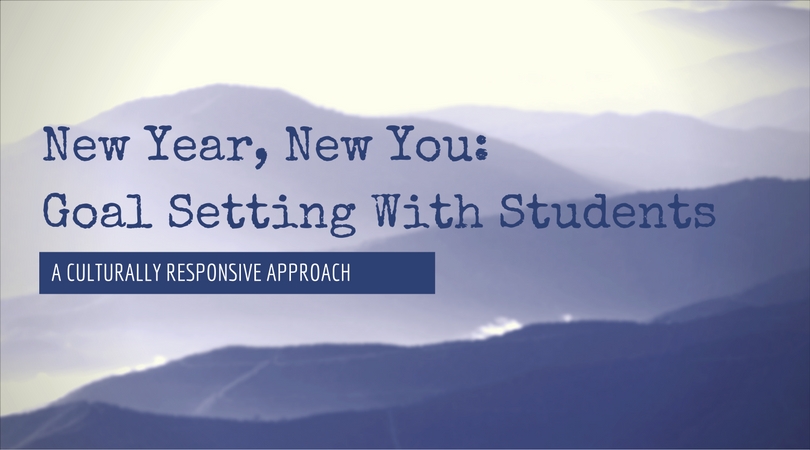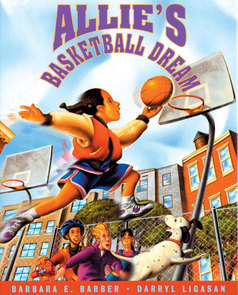 In this ongoing series, we explore what culturally responsive teaching looks like at different grade levels and offer concrete examples and resources. In November, we explored discussing Thanksgiving in the classroom. Today, educator Lindsay Barrett offers a culturally responsive approach to goal setting with students to start off the new year.
In this ongoing series, we explore what culturally responsive teaching looks like at different grade levels and offer concrete examples and resources. In November, we explored discussing Thanksgiving in the classroom. Today, educator Lindsay Barrett offers a culturally responsive approach to goal setting with students to start off the new year.
More in this series:
- What is Culturally Responsive Teaching?
- Culturally Responsive Teaching in Kindergarten: Read Alouds to Build Relationships
- Culturally Responsive Teaching in Grade 1: Intentional Selection of Texts for Reading Discussion
- Culturally Responsive Teaching in Grade 2: Bridging Between the Familiar and Unfamiliar in Literature Discussions
- Culturally Responsive Teaching in Grade 3: Going Beyond the Single Story
- A Culturally Responsive Approach to Discussing Thanksgiving in the Classroom
- How Culturally Responsive is Your Classroom Library?
 Mid-year is the perfect time to reset and rejuvenate teaching and learning. Depending on where you live, you may still have snow days, slick schoolyards, and winter clothes to contend with, but at least the fervor of the November and December holidays has subsided. It’s also an opportunity to pledge to continue supporting students’ success with culturally responsive teaching, or to try out new culturally responsive strategies if this is an area in which you’re developing your teaching practice.
Mid-year is the perfect time to reset and rejuvenate teaching and learning. Depending on where you live, you may still have snow days, slick schoolyards, and winter clothes to contend with, but at least the fervor of the November and December holidays has subsided. It’s also an opportunity to pledge to continue supporting students’ success with culturally responsive teaching, or to try out new culturally responsive strategies if this is an area in which you’re developing your teaching practice.
Making New Year’s resolutions is a common January tradition. It will benefit your students even more, though, to introduce the fundamentals of setting and striving towards personal goals in general. Of course, you set goals for your students all the time, but self-driven goal setting is well documented by research to improve achievement and motivation. Teaching students to set and strive for their own goals gives them a voice in their own learning, and provides them with a concrete tool to support their success in cultural, academic, and future professional contexts. Incorporating student-driven goal setting into your classroom aligns well with the tenets of culturally responsive teaching.
Understanding Goal Setting
Constructing an explicit definition of the word goal that is tied back to students’ lives and interests is an important place to start, educator Michele Borba explains. Discussing the goals of characters in books can help your class acquire a helpful collective set of examples. Winston’s goal to form a contest-winning band in Drummer Boy of John John is concrete springboard for initial discussion. Allie’s Basketball Dream includes an example of visualizing oneself achieving a goal –a practice backed by research to make goals more likely to be met– as Allie dreams of her career as a professional basketball player. To spark conversations about family aspirations and goal-setting experiences, share Xochitl and the Flowers/Xochitl la Nina de las Flores, in which a recent immigrant family works together to launch their flower-selling business in their new San Francisco community. Willie Wins provides an example of a school-based goal, as Willie strives to win a class math competition. Sixteen Years in Sixteen Seconds: The Sammy Lee Story illustrates long-term professional goals related to both athletic and academic achievement.
 Fine-Tuning Goals in the Classroom
Fine-Tuning Goals in the Classroom
To make classroom goal setting successful, it helps to unpack the finer points of the practice. Many teachers find it helpful to introduce the characteristics of SMART goals to students. Defining goals using specific language, plotting and writing down action steps, and establishing realistic timeframes all support student achievement. Action steps can even become short-term goals themselves. Grandfather Counts, the story of a granddaughter and grandfather who teach each other English and Chinese, exemplifies how small achievements can be meaningful. Selecting a personal focus from a list of teacher-suggested goals is a way to scaffold personal goal setting. For example, in Write This Way From the Start: The First 15 Days of Writer’s Workshop, author Kelly Boswell suggests creating a classroom anchor chart of characteristics of strong writing, and having each student choose one item to mark with a sticky note with his or her name on it as a personal goal. To focus on short-term goals across all areas, consider this blog post from 3rd Grade Thoughts, which describes the powerful practice of “WOW” goals—goals to be achieved “Within One Week.”
Perseverance and Reflection
Of course, not all work towards goals goes according to plan, so supporting students’ navigation of missteps and challenges is key. Again, books can be helpful in initiating conversations. Early elementary teachers might read aloud Butterflies for Kiri, about a girl who struggles to learn origami, as an example of persevering through mistakes. Teachers of older students might share Howard Thurman’s Great Hope, a story of an African American activist who overcame numerous obstacles to reach his goal of obtaining an education.
Learning to reflect on one’s own progress towards goals is an important component of a successful goal setting practice. This video from EL Education describes possibilities for teaching students to use assessment data to reflect on their progress towards classroom learning objectives. Engaging in reflective conversations with others is also a natural accompaniment to classroom goal setting. This practice aligns with the suggestion that culturally responsive instruction should encourage students to socially construct knowledge. This blog post from 3rd Grade Thoughts describes how to help students support each other as “goal partners,” a system that could be adapted to fit the needs of different age groups.
Engaging students in self-driven goal setting, planning and completion of action steps, and reflection are powerful practices for culturally responsive classrooms. Start the calendar year off with a commitment to this work and consider making it a regular part of your classroom practice.
 About the Author: Lindsay Barrett is a former elementary teacher and literacy nonprofit director. She currently works as a literacy consultant and stays busy raising three young boys. Find out more about her work at lindsay-barrett.com.
About the Author: Lindsay Barrett is a former elementary teacher and literacy nonprofit director. She currently works as a literacy consultant and stays busy raising three young boys. Find out more about her work at lindsay-barrett.com.








